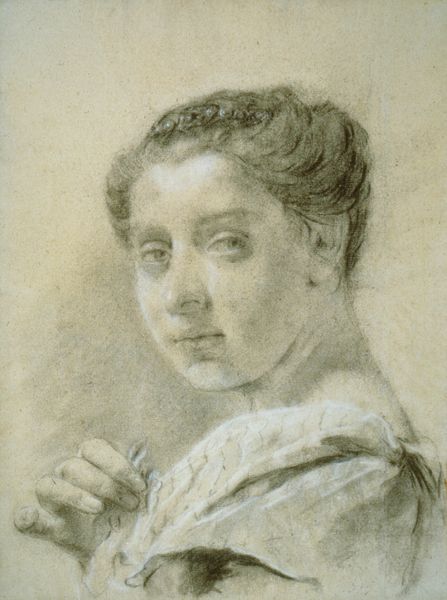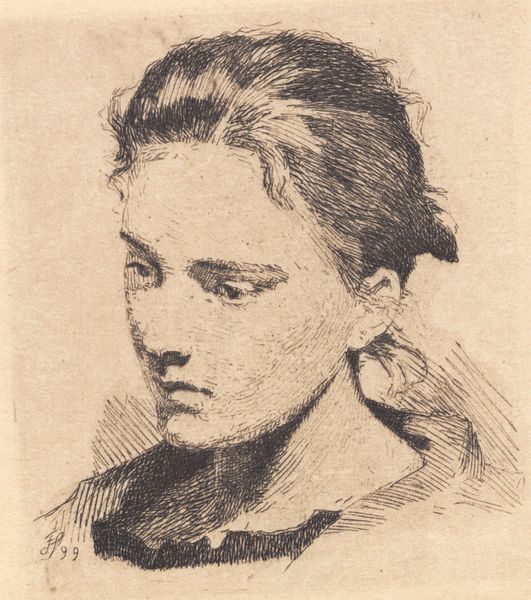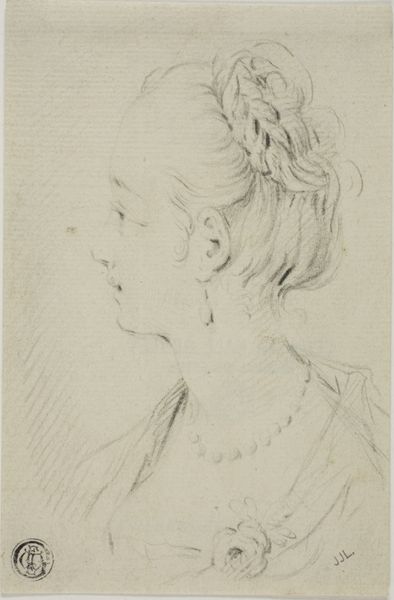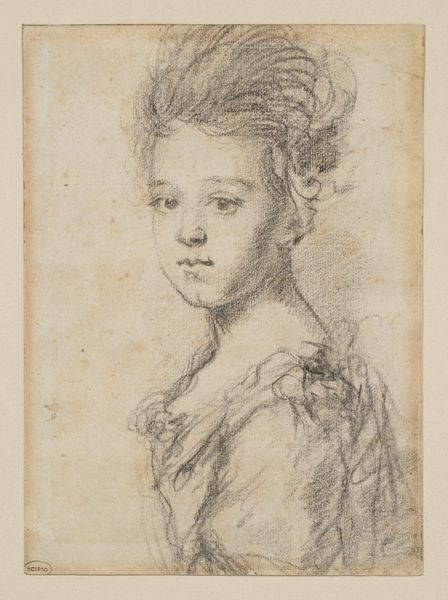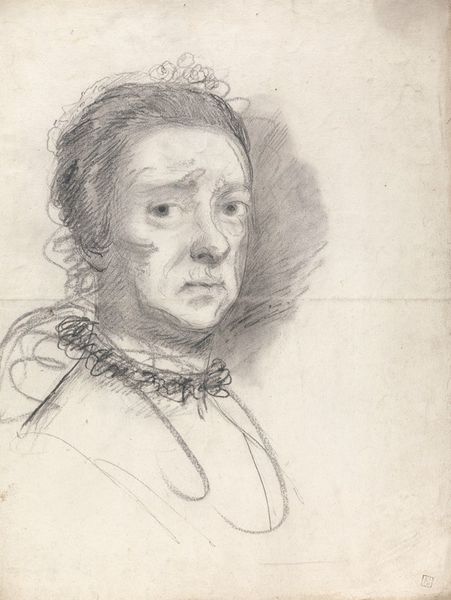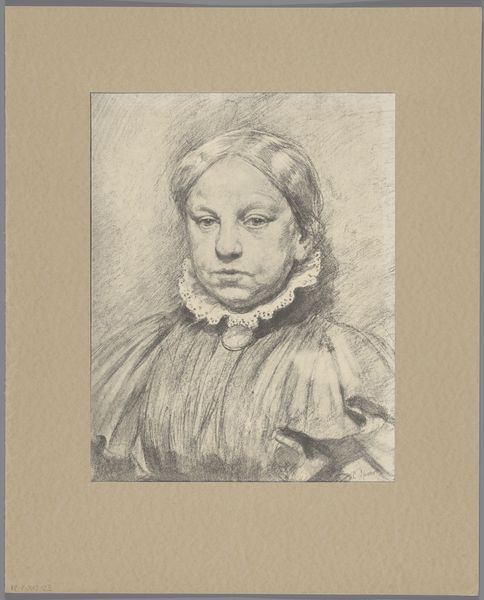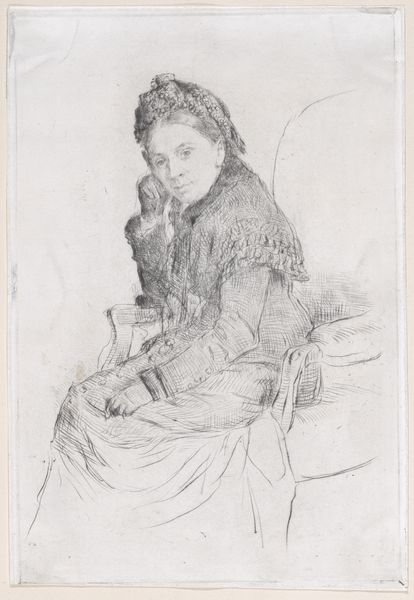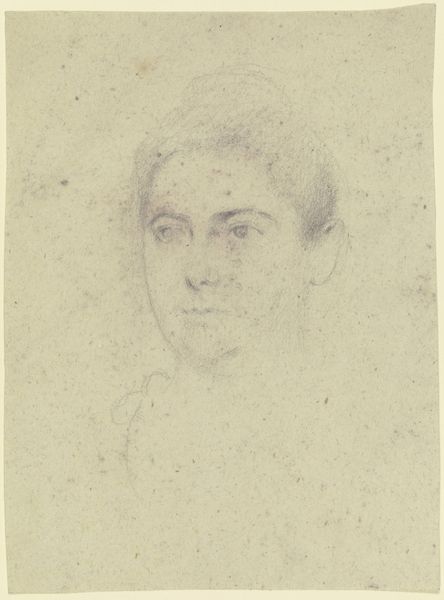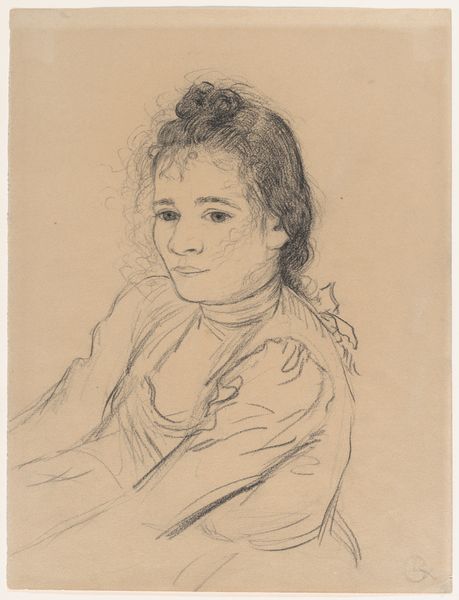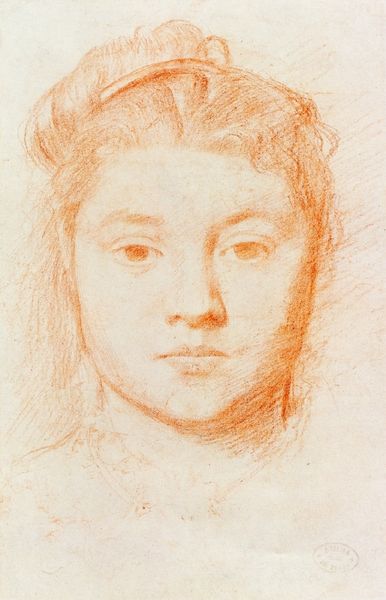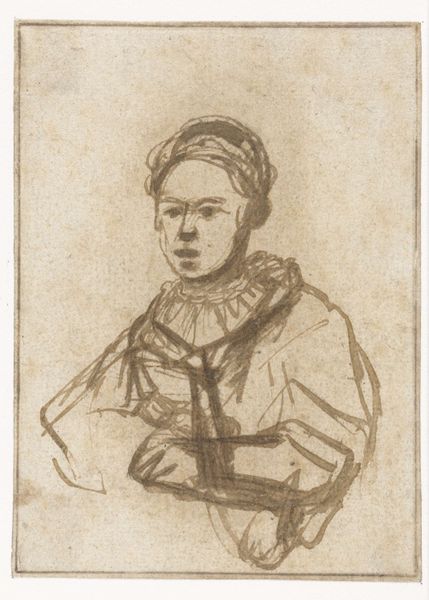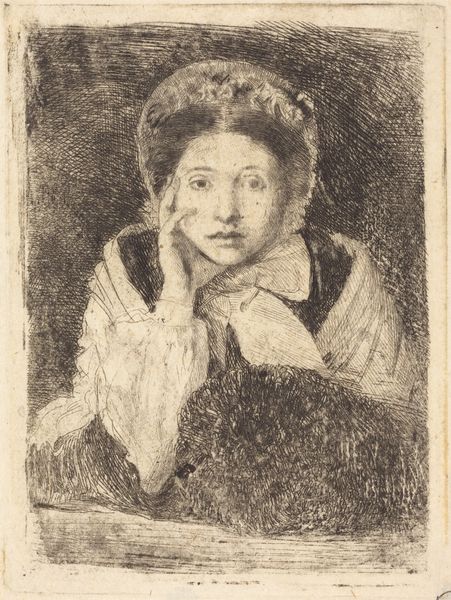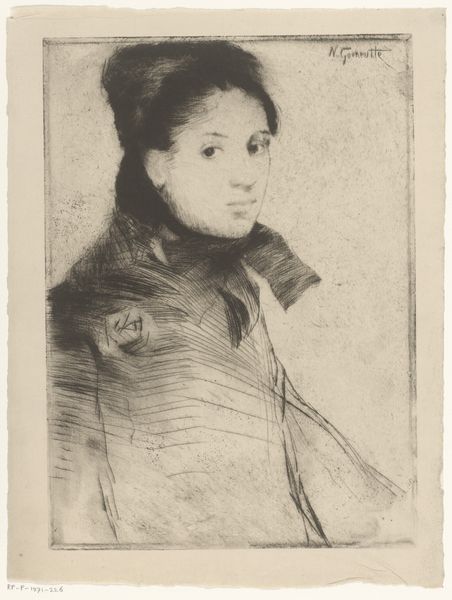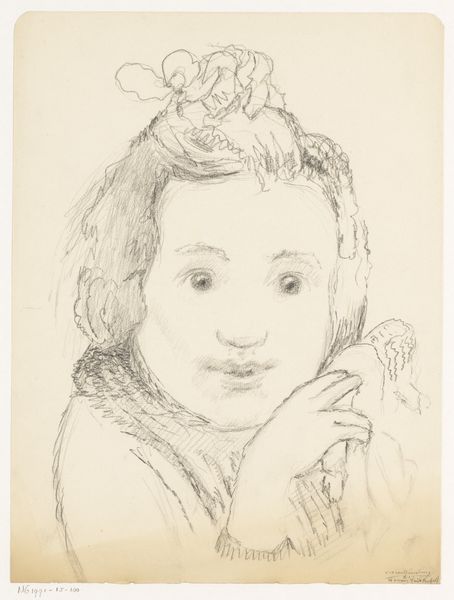
drawing, red-chalk, pencil
#
portrait
#
drawing
#
baroque
#
red-chalk
#
figuration
#
pencil
Dimensions: 16 1/2 x 10 15/16 in. (41.91 x 27.78 cm) (mount)3 1/4 x 2 3/8 in. (8.26 x 6.03 cm) (b (#86))
Copyright: Public Domain
Editor: Here we have "Portrait of Woman," a 17th-century red-chalk and pencil drawing currently housed at the Minneapolis Institute of Art, created by an unknown artist. I'm really drawn to its intimacy, how immediate and personal it feels. What stands out to you as you consider this drawing? Curator: I find myself pondering the social role such a portrait might have played in its time. Red-chalk drawings, popular in the Baroque period, often served as preparatory sketches for larger works, or as independent portrait studies. Did this function as a record, a commission, or a form of personal expression? Think about who would commission or desire such an image in the 17th century. Editor: So, it's less about the individual portrayed and more about the social circumstances of its creation and use? Curator: Not necessarily *less* about the individual, but *also* about how images were deployed in the theatre of social status. Her large collar speaks to a certain economic position; would this have been used as an image to present in courtship or maybe to represent the family wealth to political allies? Could you even begin to think of how the rise of printmaking influenced how drawings of this kind may be produced and how many viewers could appreciate art outside of the upper class? Editor: That's fascinating! The connection to printmaking is something I hadn’t considered. The artwork starts becoming more of a commodity than simply an image of the woman herself. Curator: Exactly! It's through that lens – understanding the broader visual culture of the time – that we can really unpack what this "Portrait of Woman" might have signified then, and what it can tell us now about art's role in shaping society and perceptions of social power. Editor: I’m beginning to think about portraiture and art itself very differently now, appreciating its power to show insight to social commentary in history. Curator: Indeed! Looking at it in relation to these historical forces truly changes how one appreciates this image.
Comments
No comments
Be the first to comment and join the conversation on the ultimate creative platform.
